Angelika Rück | University of Ulm | Ulm, Germany
“Metabolic FLIM and oxygen PLIM: Techniques, algorithms and applications”*
Scientific Talks, Session II | Monday, September 12 | 14:40 – 15:10

Fluorescence lifetime imaging (FLIM) of metabolic coenzymes, as NAD(P)H (nicotinamide adenine dinucleotide (phosphate)) and FAD (flavin adenine dinucleotide), is now widely accepted to be one of the most important imaging methods for cell metabolism; different algorithms are investigated to get reproducible results. Confusion exists in the correct interpretation of the redox state of cells and the correlation with the fluorescence lifetime of the coenzymes. Whereas the intensity based optical redox ratio, defined by Britton Chance in 1979 (Britton Chance et al., J. Biol. Chem., 1979) determines the redox state of cells and distinguishes oxidized from reduced cells a correlation with the fluorescence lifetime is valid only for special conditions, if the NADH/NAD+ pool is stable. However, NAD+ can be metabolized in different reactions, leading to a change in the redox ratio but not necessarily in the fluorescence lifetime, which is only an indicator for cell metabolism (Quinn et al., Sci Rep, 3, 3432 (20212), Heikal et al., Biomark Med. 4(2), 241-263 (2010), Schaefer et al., Neurophotonics, 4(4): 045004 (2017)). Therefore, a careful conclusion on the redox state is needed when comparing the fluorescence lifetime of different cell systems. New algorithms are needed to circumvent these problems and to image cell metabolism and redox state from fluorescence lifetimes in complex cellular systems. With respect to this, results published so far will be summarized and new approaches will be discussed. The significance of a metabolic index based on NAD(P)H FLIM will be explained and compared with the fluorescence lifetime induced redox ratio (FLIRR) where FLIM of NAD(P)H and FAD is considered (Alam and Periasamy, Sci Rep., 2017). The importance of FMN will be discussed and the FLIRR approach will be extended to FLIRR1, FLIRR2 and FLIRR3 with respect to bound and free FAD and FMN. Using a three channel TCSPC system simultaneous metabolic NADH/FAD/FMN FLIM and oxygen PLIM/delayed fluorescence could be realized. Various applications will be shown and discussed.
Acknowledgment:
This work was supported by the Ministry of Research and Development, FKZ order: 13N14508 (“OMOXI”), the Deutsche Forschungsgemeinschaft DFG, GZ: RU 473/12-1 and the company Beiersdorf AG Hamburg, Dr. Julia Weise, Research and Development.
*dedicated to Sviatlana Kalinina, who died on the 24th of september 2021 after a long time disease
